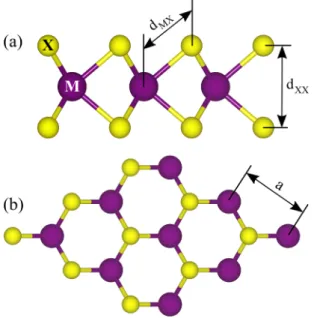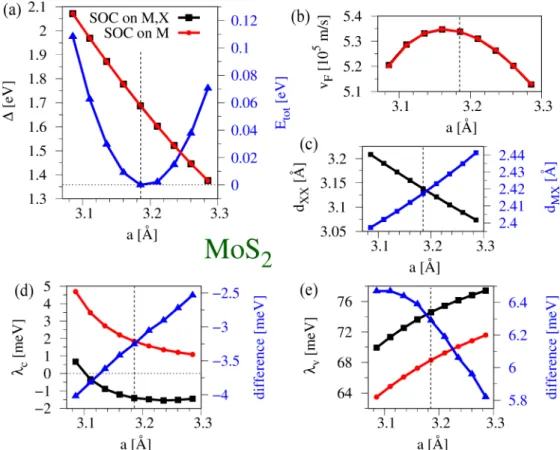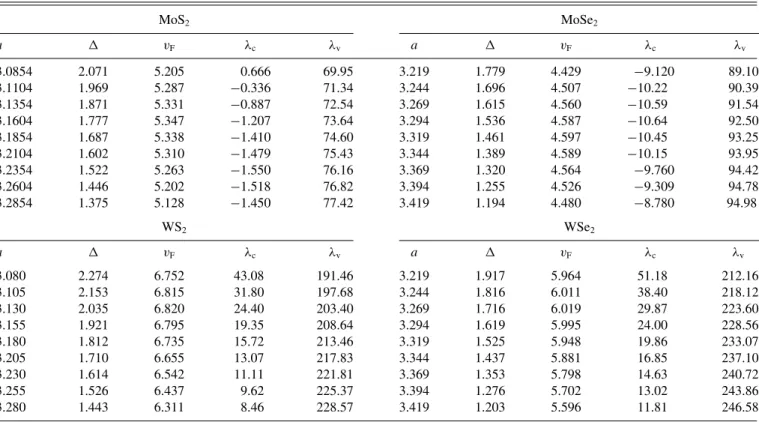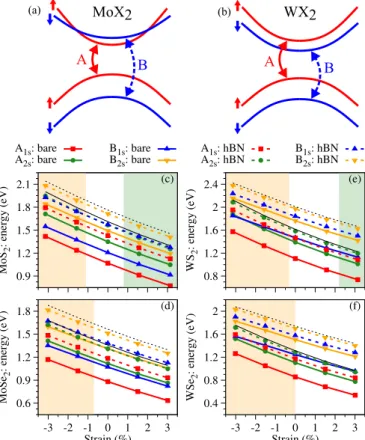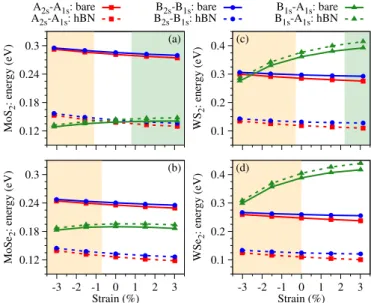Strain-tunable orbital, spin-orbit, and optical properties of monolayer transition-metal dichalcogenides
Klaus Zollner ,
*Paulo E. Faria Junior, and Jaroslav Fabian
Institute for Theoretical Physics, University of Regensburg, 93040 Regensburg, Germany
(Received 24 September 2019; revised manuscript received 5 November 2019; published 15 November 2019) When considering transition-metal dichalcogenides (TMDCs) in van der Waals heterostructures for periodic ab initio calculations, usually, lattice mismatch is present, and the TMDC needs to be strained. In this study we provide a systematic assessment of biaxial strain effects on the orbital, spin-orbit, and optical properties of the monolayer TMDCs using ab initio calculations. We complement our analysis with a minimal tight-binding Hamiltonian that captures the low-energy bands of the TMDCs around the K and K
valleys. We find charac- teristic trends of the orbital and spin-orbit parameters as a function of the biaxial strain. Specifically, the orbital gap decreases linearly, while the valence (conduction) band spin splitting increases (decreases) nonlinearly in magnitude when the lattice constant increases. Furthermore, employing the Bethe-Salpeter equation and the extracted parameters, we show the evolution of several exciton peaks, with biaxial strain, on different dielectric surroundings, which are particularly useful for interpreting experiments studying strain-tunable optical spectra of TMDCs.
DOI: 10.1103/PhysRevB.100.195126
I. INTRODUCTION
A vastly evolving field of condensed-matter physics is that of two-dimensional (2D) van der Waals (vdW) materials and their hybrids. The available material repertoire covers semi- conductors [1–5] (MoS
2, WSe
2), ferromagnets [6–21] (CrI
3, CrGeTe
3), superconductors [22–24] (NbSe
2), and topologi- cal insulators [25] (WTe
2), which offer unforeseen potential for electronics and spintronics [26,27]. For example, mono- layer transition-metal dichalcogenides (TMDCs) are direct band gap semiconductors with remarkable physical properties [1–5,28–31], especially in the realm of optoelectronics [32], optospintronics [33–35], and valleytronics [36–38]. Currently, TMDCs, being stable in air, are a favorite platform for optical experiments, including optical spin injection due to helicity- selective optical excitations [39].
The ability to control and modify the electronic, spin, and optical properties of 2D materials is extremely valuable for investigating novel physical phenomena, as well as a potential knob for device applications. One possibility to do so in TMDCs is by deforming the crystal lattice via strain engi- neering [40–52]. Recent experiments have shown that strain modulation is very effective and can lead to changes in the optical transition energies by hundreds of meV with just a few percent of applied strain [40,41,44–47]. Even more interesting is that this strain modulation is completely reversible [44,45].
As a general trend observed in the experimental studies, bi- axial strain induces a significantly stronger modulation when compared to uniaxial strain, a fact also supported by ab initio calculations [53,54]. Furthermore, by strain engineering it is possible to localize excitons in specific regions, which is a
*
